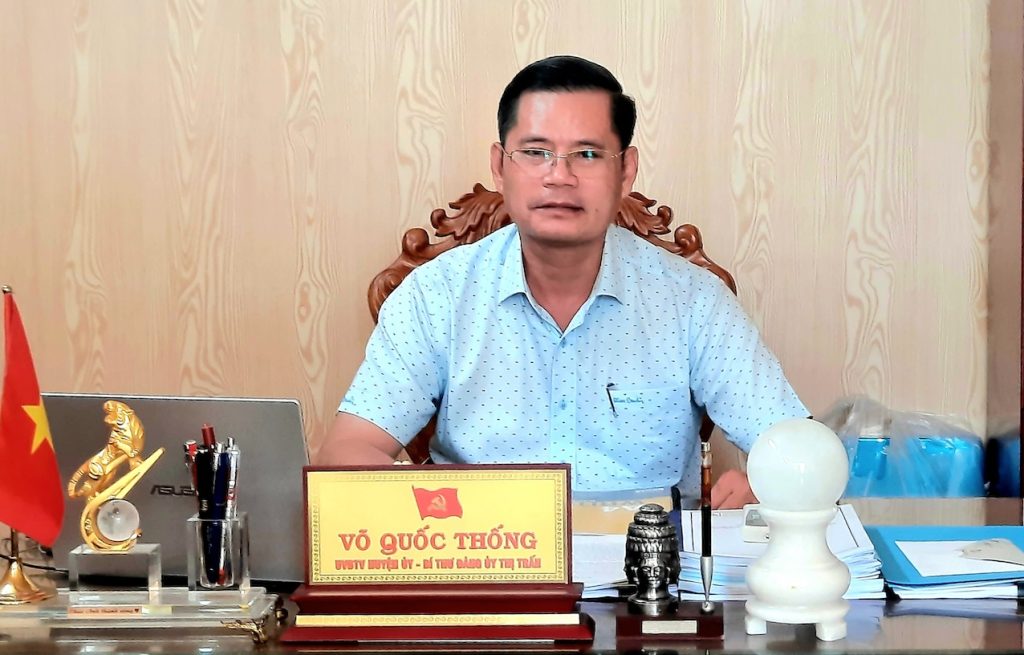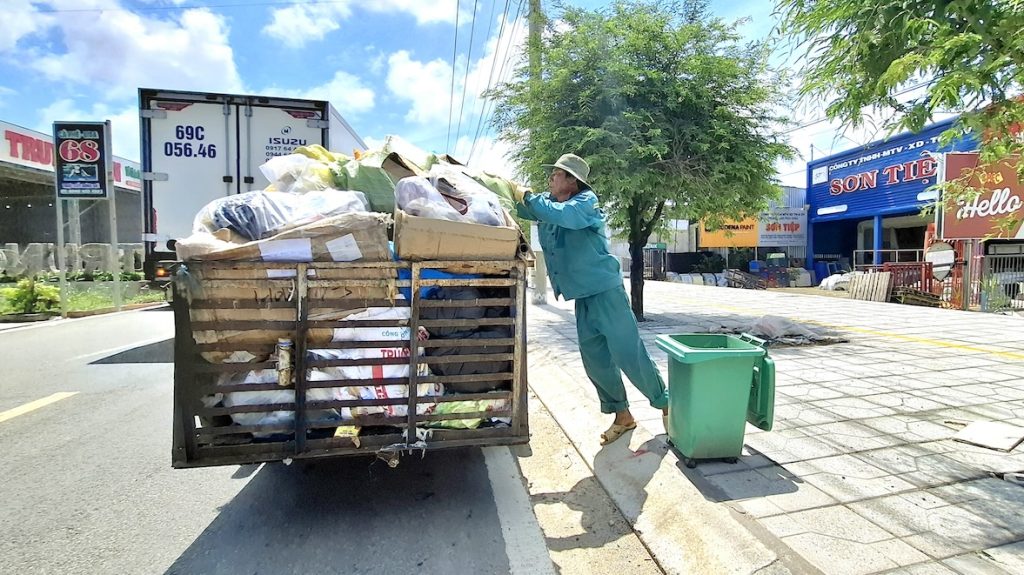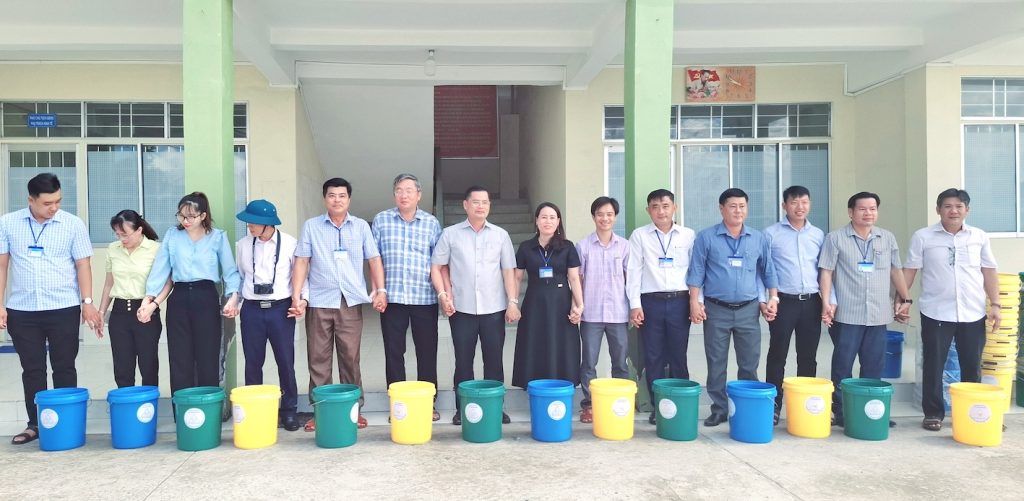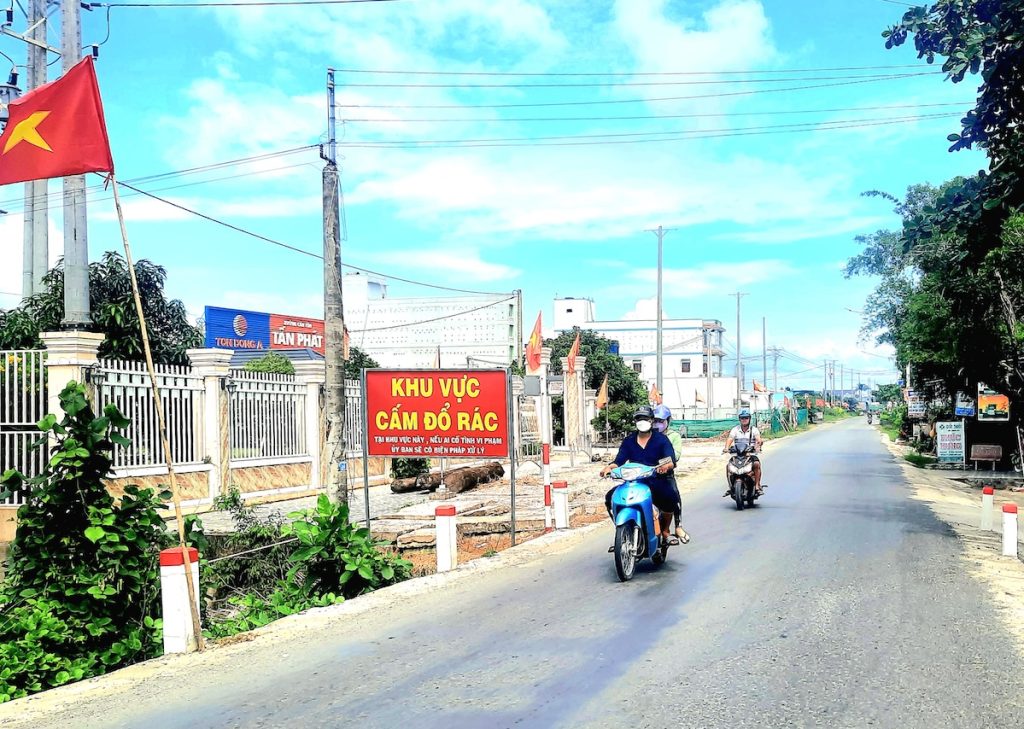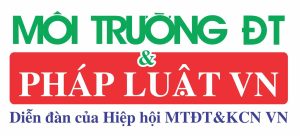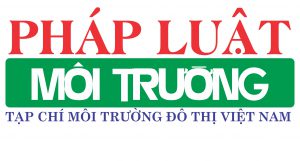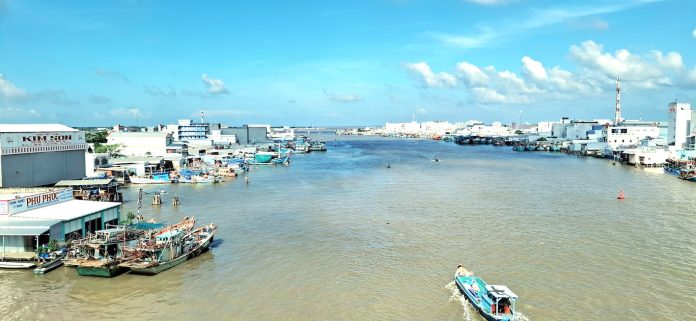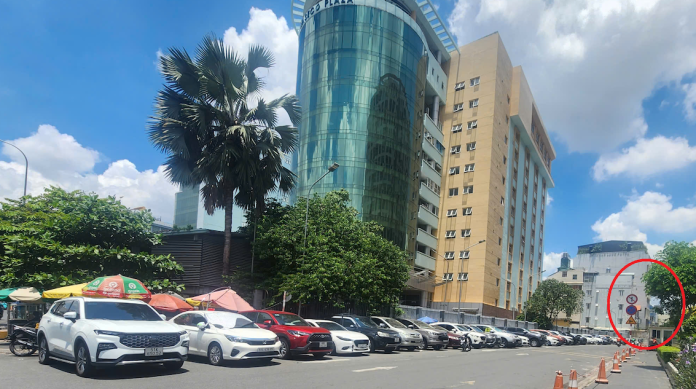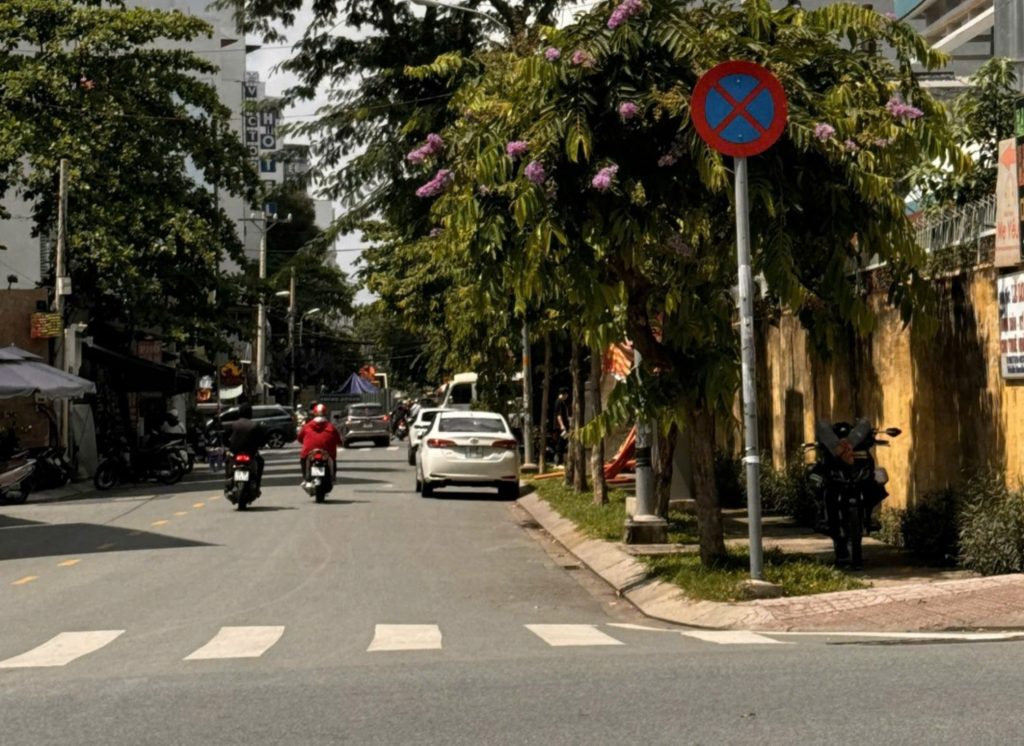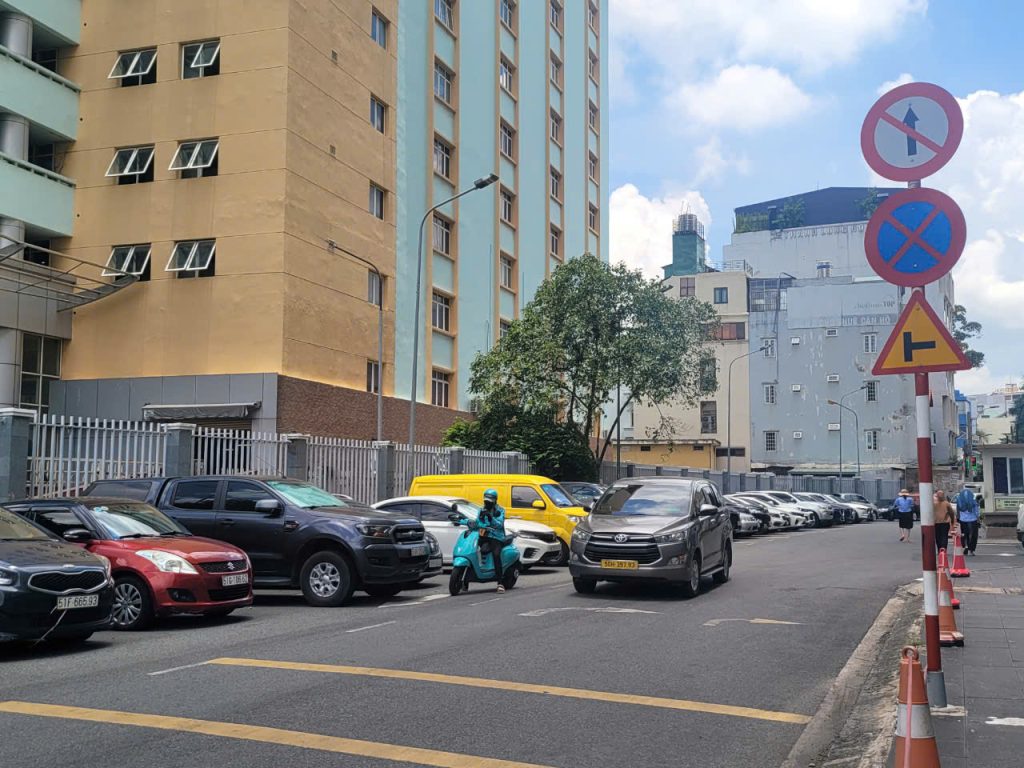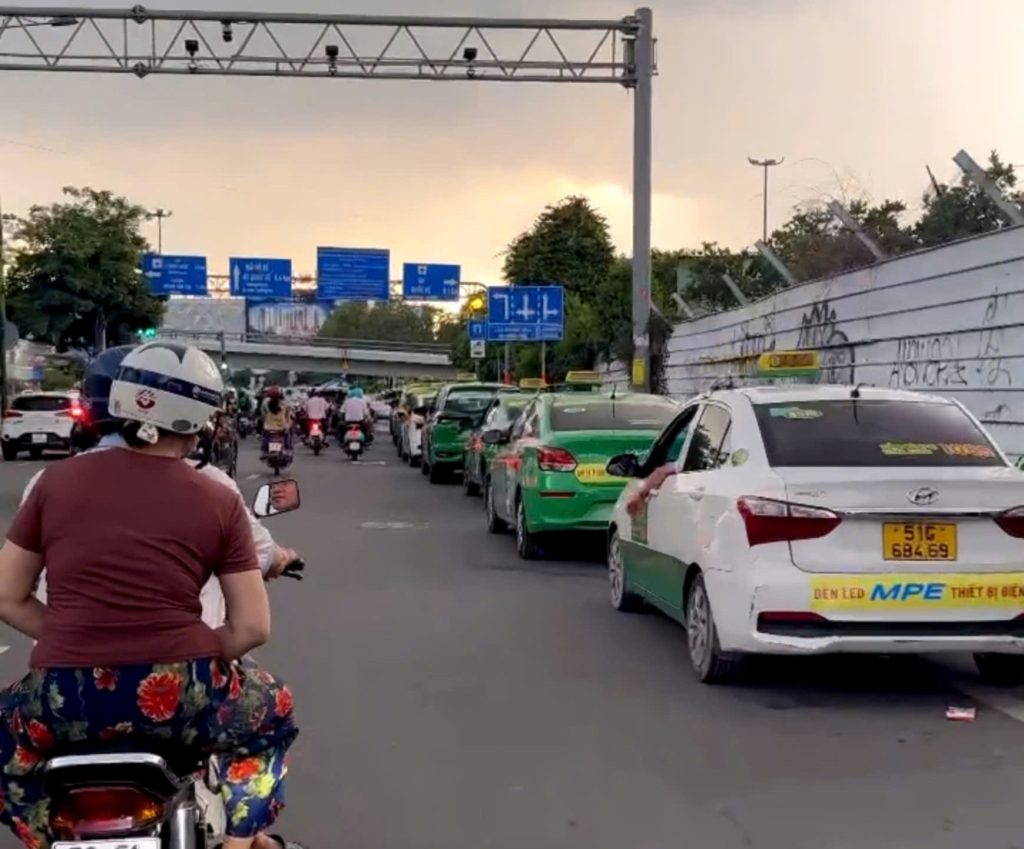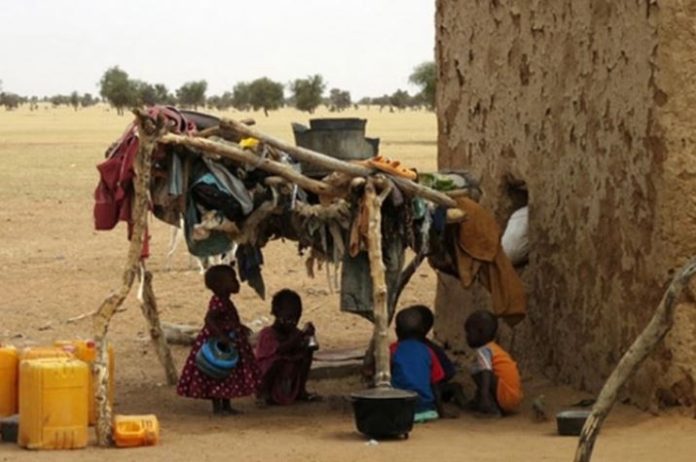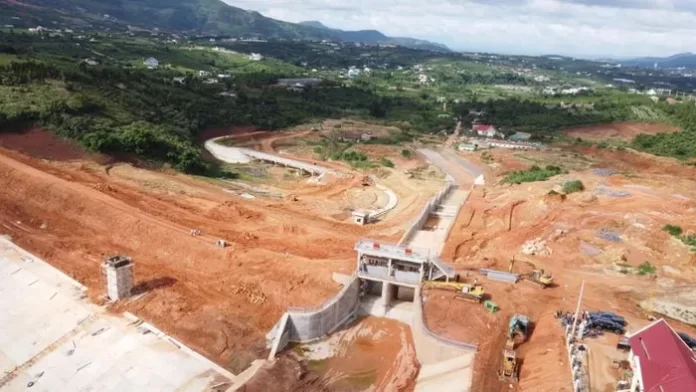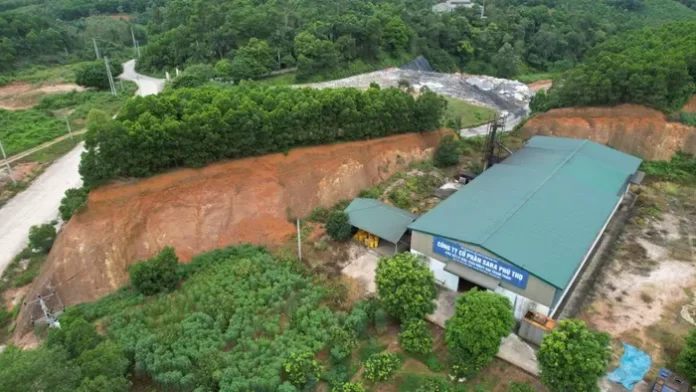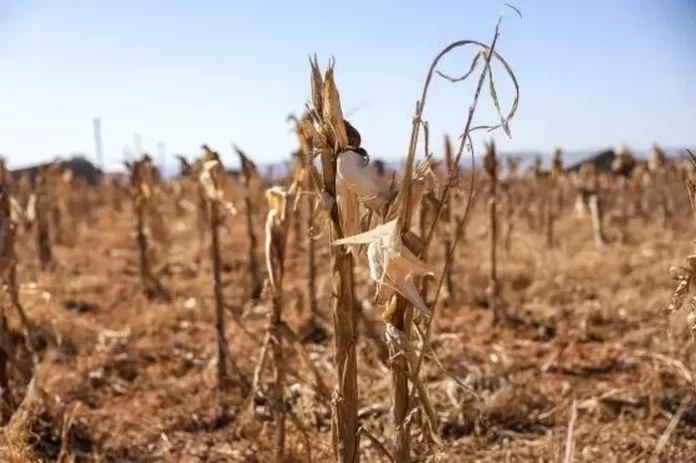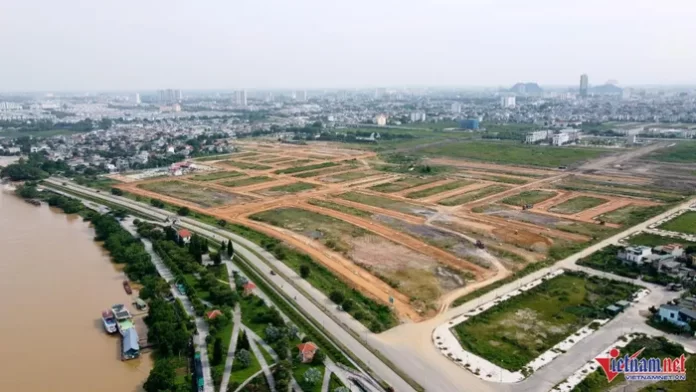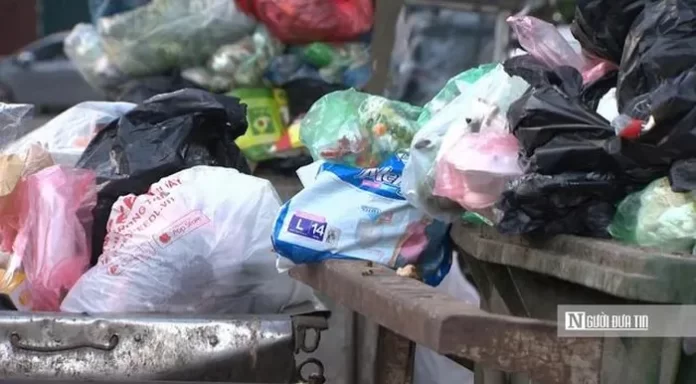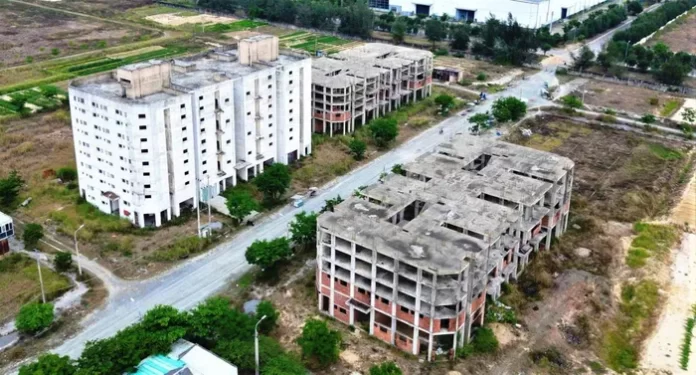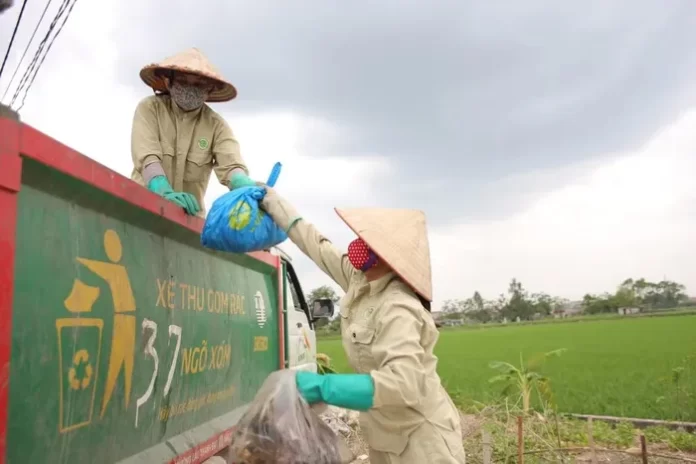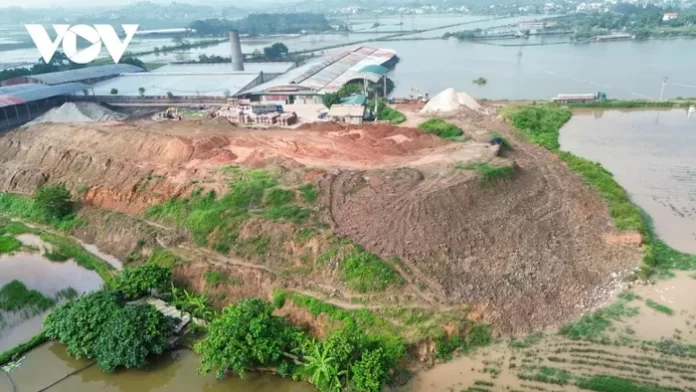Ban biên tập Chuyên trang Quản lý Môi trường, Tạp chí Môi trường và Đô thị Việt Nam trân trọng giới thiệu tới quý độc giả Công bố quốc tế lĩnh vực môi trường số 31-2024.
Về quản lý môi trường
– Những biến thể theo chiều dọc và sự đa dạng môi trường đã thúc đẩy bản giao hưởng của hệ động vật nguyên sinh bám trên bề mặt trong các hệ sinh thái biển.
– Chiến lược hiệu quả xanh xem xét các mối quan hệ tuần hoàn giữa khí thải CO2, bằng sáng chế xanh và trái phiếu xanh.
– Đóng góp nguồn gốc của bụi khí đen trong giai đoạn 2020–2022 tại một địa điểm đô thị ở đồng bằng Indo-Gangetic.
– Tái tưởng tượng chính sách tài nguyên: Tạo sự hợp lực trong việc sử dụng chất thải khai thác mỏ cho các phương pháp xây dựng bền vững.
– Dấu vết nước xám từ cây trồng ở Trung Quốc: Tác động của thuốc trừ sâu lên ô nhiễm nước.
– Các khoản đầu tư vào sản xuất vật liệu nào là cần thiết để đạt được xây dựng phát thải ròng bằng không tại Vương quốc Anh vào năm 2050?
– Sự tiến hóa lâu dài của các hạt bụi carbon trong PM2.5 trong suốt hơn một thập kỷ bùng phát và kiểm soát ô nhiễm không khí ở Trung Quốc trung tâm bị ô nhiễm.
– Ứng dụng mô hình Kano để hiểu các kỳ vọng về sự chuyển đổi bền vững của sinh viên kinh doanh từ các cơ sở giáo dục đại học: Một nghiên cứu xuyên quốc gia.
– Tình trạng hiện tại và triển vọng tương lai về các chỉ số dân số de facto cho việc chuẩn hóa trong dịch tễ học dựa trên nước thải: Một tổng quan tài liệu có hệ thống.
Về môi trường đô thị
– Tích hợp đánh giá rủi ro vi sinh định lượng và số năm sống điều chỉnh theo khuyết tật để đánh giá tác động của đô thị hóa đối với các rủi ro sức khỏe cho những người giải trí trên sông.
– Sự tiến hóa của các đặc tính lý hóa và rửa trôi của tro bay từ đốt rác thải rắn đô thị ở Trung Quốc theo tiêu chuẩn phát thải cực thấp.
– Mức độ nền tự nhiên, phân bổ nguồn gốc và rủi ro sức khỏe của các nguyên tố có khả năng độc hại trong nước ngầm của khu vực đô thị hóa cao.
– Kiểm soát tiếng ồn mạng lưới đô thị dựa trên tối ưu hóa cấp độ đường, xem xét lợi ích tổng thể của môi trường giao thông.
– Đô thị hóa làm giảm đa dạng sinh học, đơn giản hóa cộng đồng và lọc các loài chim dựa trên các đặc điểm chức năng của chúng trong một thành phố nhiệt đới.
– Hướng tới phát triển bền vững trong các thành phố dựa trên tài nguyên: Đánh giá tác động của công nghệ và đầu tư ngoài vùng đối với chuyển đổi carbon thấp.
– Ra-226 trong vật liệu xây dựng là nguồn gốc của radon trong nhà ở các tòa nhà cao tầng tại các thành phố của Nga.
– Nghiên cứu số về hiệu ứng làm mát của các công viên xanh đô thị đối với môi trường nhiệt trong tương lai tại Đại Liên, Trung Quốc.
– Tác động của sự phát triển đô thị ở Delhi và môi trường ngoại ô của nó đối với sự phơi nhiễm nhiệt đô thị.
Về môi trường khu công nghiệp
– Chuỗi cung ứng xanh cho nguyên liệu thép dưới sự bất định về giá cả và nhu cầu.
– Tác động của việc xây dựng tòa án môi trường đối với chất lượng thông tin môi trường công bố của doanh nghiệp.
– Bảo trì như một công cụ bền vững trong các ngành công nghiệp quy trình có rủi ro cao: Tổng quan và hướng đi trong tương lai.
– Tận dụng các dòng chất thải từ ngành công nghiệp bột giấy và giấy thành năng lượng sinh học và các sản phẩm có giá trị gia tăng: Một cách tiếp cận nhà máy lọc sinh học tích hợp.
– Chiến lược bền vững dựa trên trách nhiệm xã hội của các công ty ngành công nghiệp đồ uống cho chuỗi cung ứng tuần hoàn.
– Ảnh hưởng của chi tiêu bảo vệ môi trường của công ty đến các doanh nghiệp khác.
– Tín hiệu xanh dưới áp lực môi trường: Áp lực từ quy định môi trường của chính quyền địa phương có thúc đẩy việc công bố thông tin môi trường của doanh nghiệp không?
– Kế hoạch sản xuất bền vững dài hạn cho các mỏ lộ thiên: Một khung tích hợp để tối ưu hóa đồng thời về kinh tế và môi trường.
– Tổng quan hệ thống về các thực hành xanh trong ngành xây dựng Malaysia: Tình trạng, thách thức, động lực chính, hệ thống xếp hạng và sự tiến hóa công nghệ.
CHUYÊN TRANG QUẢN LÝ MÔI TRƯỜNG
Tạp chí Môi trường và Đô thị Việt Nam
Xin trân trọng giới thiệu!
ENVIRONMENTAL MANAGEMENT / QUẢN LÝ MÔI TRƯỜNG
1. Vertical variations and environmental heterogeneity drove the symphony of periphytic protozoan fauna in marine ecosystems
Science of The Total Environment, Volume 932, 1 July 2024, 173115Abstract
Periphytic protozoa are esteemed icons of microbial fauna, renowned for their sensitivity and role as robust bioindicators, pivotal for assessing ecosystem stress and anthropogenic impacts on water quality. Despite their significance, research exploring the community dynamics of protozoan fauna across diverse water columns and depths in shallow waters has been notably lacking. This is the first study that examines the symphony of protozoan fauna in different water columns at varying depths (1, 2, 3.5 and 5 m), in South China Sea. Our findings reveal that vertical changes and environmental heterogeneity plays pivotal role in shaping the protozoan community structure, with distinct preferences observed in spirotrichea and phyllopharyngea classes at specific depths. Briefly, diversity metrics (i.e., both alpha and beta) showed significantly steady patterns at 2 m and 3.5 m depths as well as high homogeneity in most of the indices was observed.
Co-associations between environmental parameters and protozoan communities demonstrated temperature, dissolved oxygen, salinity, and pH, are significant drivers discriminating species richness and evenness across all water columns. Noteworthy variations of the other environmental parameters such as SiO3–Si, PO4−-P, and NO2 ––N at 1 m and NO3 −–N, and NH4+–N, at greater depths, signal the crucial role of nutrient dynamics in shaping the protozoan communities. Moreover, highly sensitive species like Anteholosticha pulchara, Apokeronopsis crassa, and Aspidisca steini in varying environmental conditions among vertical columns may serve as eco- indicators of water quality. Collectively, this study contributes a thorough comprehension of the fine-scale structure and dynamics of protozoan fauna within marine ecosystems, providing insightful perspectives for ecological and water quality assessment in ever-changing marine environments.
2. Green efficiency strategy considering cyclical relationships among CO2 emissions, green patents, and green bonds
Journal of Cleaner Production, Volume 464, 20 July 2024, 142704
Abstract
Globally increasing concerns on climate change have garnered considerable attention toward green investments. Although the effects of green investments have been investigated, their productivity remains largely unexplored. This study proposes an initial discussion of green efficiency based on the cyclical relationship among green investments, technology, and national-level performance. This study applies a three-stage data envelopment analysis to compare green efficiency of 19 countries based on carbon dioxide emissions, green patents, and green-bond issuance data of 12 years starting from 2010 when national green-bond issuance was initiated.
We use a logistic regression to derive policy implications by analyzing major factors affecting green efficiency. The results reveal that no country is efficient across all stages. Overall, the finding reveals which stage each country should focus on to improve green efficiency; suggests benchmarks and green efficiency strategies for inefficient countries; and highlights the appropriate level of research and development (R&D) expenditure and adoption support for solar/wind energy as part of the technology support policy. As the national green efficiency level is derived in stages, our approach contributes to forming green efficiency strategies at the national level in three stages. Moreover, this study presents the policy implications related to R&D expenditures and technology support to address the limited understanding of green efficiency management.
3. Source contribution of black carbon aerosol during 2020–2022 at an urban site in Indo-Gangetic Plain
Science of The Total Environment, Volume 934, 15 July 2024, 173039
Abstract
The extensive emissions of black carbon (BC) from the Indo-Gangetic Plain (IGP) region of India have been well recognized. Particularly, biomass emissions from month-specific crop-residue burning (April, May, October, November) and heating activities (December–February) are considered substantial contributors to BC emissions in the IGP. However, their precise contribution to ambient BC aerosol has not been quantified yet and remains an issue of debate. Therefore, this study aims to fill this gap by quantifying the contribution of these month-specific biomass emissions to ambient BC at an urban site in IGP. This study presents the analysis of BC mass concentrations (MBC) measured for 3 years (2020−2022) in Delhi using an optical photometer i.e., continuous soot monitoring system (COSMOS).
A statistical analysis of monthly mean MBC and factors affecting the MBC (ventilation coefficients, air mass back trajectories, fire counts) is performed to derive month-wise contribution due to background concentration, conventional emission, regional transport, crop-residue burning, and heating activities. The yearly mean MBC (5.3 ± 4.7, 5.6 ± 5.0, and 5.3 ± 3.5 μg m−3 during 2020, 2021, and 2022, respectively) remained relatively consistent with repetitive monthly patterns in each year. The peak concentrations were observed from November to January and low concentrations from June to September. Anthropogenic activities contributed significantly to MBC over Delhi with background concentration contributing only 30 % of observed MBC. The percentage contribution of emissions from crop-residue burning varied from 15 % (May) to 37 % (November), while the contribution from heating activities ranged from 25 % (December) to 39 % (January). This source quantification study highlights the significant impact of month-specific biomass emissions in the IGP and can play a vital role in better management and control of these emissions in the region.
4. Reimagining resources policy: Synergizing mining waste utilization for sustainable construction practices
Journal of Cleaner Production, Volume 464, 20 July 2024, 142795
Abstract
To address the urgent need for sustainability, this paper provides a critical discussion and serves as a pivotal resource for stakeholders in the mining and construction sectors. It advocates repurposing mining waste into concrete aggregate, promoting eco-friendly practices. The paper conducts a thorough review of recent developments, technological innovations, and methodologies to showcase mining waste’s potential as a sustainable construction material. Highlighting more than a decade of research, our analysis reveals significant environmental, economic, and practical benefits, such as reduced ecological footprints through waste minimization and resource conservation, alongside cost-effective material alternatives.
This investigation offers an in-depth look at these advantages and sparks essential discussions about incorporating advanced recycling technologies into conventional construction workflows. Promoting circular economy principles, the study underscores the dual gains: lessening environmental impact and progressing towards resource efficiency. Aiming to alter industry perceptions and practices, the work encourages a shift towards environmental stewardship and innovation. Ultimately, this paper aims not only to disseminate knowledge but also to motivate action. It provides readers with the necessary insights to lead a transition towards more sustainable industry norms, thus establishing a new benchmark for addressing sustainability challenges with creativity and collective effort.
5. Crop grey water footprints in China: The impact of pesticides on water pollution
Science of The Total Environment, Volume 935, 20 July 2024, 173464
Abstract
Agricultural water pollution is a significant challenge in China, a rapidly growing economy with a large agricultural sector. The grey water footprint (WF) is a tool for evaluating freshwater pollution. It expresses pollution in volumetric units identifying the pollutant that theoretically needs most water to be diluted to accepted water quality standards. Previous agricultural grey WF studies focused on nitrogen (N) and phosphorus (P), some studies included pesticides. This study assesses grey WFs based on N, P and 1513 pesticide combinations for twelve main crops and two crop categories in 31 Chinese provinces. Grey WFs, including the pesticide component, are far larger than estimated before, dominating total agricultural WFs (green, blue, and grey). The total grey WF of Chinese agriculture (4,900 109 m3 year−1) is determined by pesticides, while grey WFs related to N and P are 450 and 1,500 109 m3 year−1, differences of a factor of eleven and three respectively. The provinces Heilongjiang, Inner Mongolia, Hebei, Henan, and Shandong are hotspots contributing 37 % to the total grey WF.
A limited number of pesticides used for maize, vegetables, fruits and potato (Mancozeb a fungicide, Acetochlor a herbicide and Cypermethrin an insecticide) dominate total grey WFs, contributing 80 % to the total grey WF. Eliminating the most polluting pesticides per category and redistributing the remaining ones with a similar function but lower grey WFs reduces national water pollution from agriculture by 64 %. Only five crops, i.e. maize, potato, soybean, rice and wheat, and the two crop categories, vegetables and fruits, contribute 94 % to this reduction. Probably grey WFs could reduce even further with a second elimination and redistribution effort. This study is the first national grey WF assessment related to pesticides in agriculture. It offers valuable insights to farmers and policymakers to enhance water quality in China and beyond.
6. What investments in material production are needed to achieve net-zero construction in the UK by 2050?
Journal of Cleaner Production, Volume 464, 20 July 2024, 142709
Abstract
Meeting the goal of reaching zero emissions by 2050 requires profound changes in the production of bulk materials, cement and concrete. For construction sector, this transition is also dependent on the evolution of demand, stemming from changes in the population structure and practice in structural design. Many timelines have been produced suggesting pathways to zero emissions, but none have looked at the required investment level, or the feasibility of transition looking at the level of single plants being shut, transformed or built within a single country. In this paper, we have looked at transition pathways in the United Kingdom as a function of the available funding and the possible emergence of transformative technologies. We find that trade is a necessary component of the transition, allowing for continued construction while the production apparatus is upgraded. Our results further suggest that the current level of investment is consistent with today’s carbon price but falls short of what is necessary to achieve net zero by 2050. Finally we find that pathways assuming that CCS will be available at scale are particularly susceptible to overshoot their emissions target if the technological deployment fails to materialise. This is because they combine heavy investments, immature technology and concentrated risk.
7. Long-term evolution of carbonaceous aerosols in PM2.5 during over a decade of atmospheric pollution outbreaks and control in polluted central China
Science of The Total Environment, Volume 935, 20 July 2024, 173089
Abstract
Against the backdrop of an uncertain evolution of carbonaceous aerosols in polluted areas over the long term amid air pollution control measures, this 11-year study (2011–2021) investigated fine particulate matter (PM2.5) and carbonaceous components in polluted central China. Organic carbon (OC) and elemental carbon (EC) averaged 16.5 and 3.4 μg/m3, constituting 16 and 3 % of PM2.5 mass. Carbonaceous aerosols dominated PM2.5 (35 and 27 %) during periods of excellent and good air quality, while polluted days witnessed other components as dominants, with a significant decrease in primary organic aerosols and increased secondary pollution. From 2011 to 2021, OC and EC decreased by 53 and 76 %, displaying a high-value oscillation phase (2011–2015) and a low-value fluctuation phase (post-2016). A substantial reduction in high OC and EC concentrations in 2016 marked a milestone in significant air quality improvement attributed to effective control measures, especially targeting OC and EC, evident from their decreased proportion in PM2.5.
Primary OC (POC) in winter exhibited the most pronounced reduction (8 % per year), and the seasonal disparities in PM2.5 and carbonaceous components were reduced, showcasing the effectiveness of control measures. Contrary to the more pronounced reduction of EC, which decreased in proportion to PM2.5, secondary OC (SOC) in PM2.5 exhibited an increasing trend. Along with rising OC/EC, SOC/OC, and SOC/EC ratios, this indicates a growing prominence of secondary pollution compared to the decrease in primary pollution. SOC shows an increasing trend with NO2 rise (r = 0.53), without O3 promoting SOC. Positive correlations of SOC with SO2, CO (r = 0.41, 0.59), also highlight their influence on atmospheric conditions, oxidative capacity, and chemical reactions, indirectly impacting SOC formation. The implementation of precise precursor emission reduction measures holds the key to future efforts in mitigating SOC pollution and reducing PM2.5 concentrations, thereby contributing to improved air quality.
8. Application of the Kano model for insights into business students’ sustainability transformation expectations from higher educational institutions: A cross-country study
Journal of Cleaner Production, Volume 464, 20 July 2024, 142748
Abstract
While previous research focused on investigating students’ perceptions, few studies have analyzed students’ future-oriented normative sustainability expectations from their Higher Educational Institutions (HEIs) in various cultural contexts. The goal of this study is to (1) identify business students’ sustainability transformation expectations from their HEIs, (2) uncover potential differences in expectations across cultural environments, and (3) explain how students’ sustainability expectations impact their behaviors towards HEIs. A mixed qualitative-quantitative research design using a semi-standardized questionnaire based on a sample of 239 business students from the USA and Germany was applied. Sustainability topics at HEIs are derived both from a literature review and through interviews and were categorized using content analysis.
Data for the study was collected from business students in Bachelor programs at two state universities in the USA and one public university in Germany and the Kano analysis was utilized to examine students’ sustainability expectations. Our analysis uncovered 19 distinct topic areas of sustainability at HEIs. Across both countries, students considered the integration of sustainability in production and consumption, as well as gender equality and inclusion, as basic requirements for future sustainability transformations. Other attributes were evaluated as indifferent. Students from the USA considered staff and faculty development opportunities or institutional support as performance attributes, while students from Germany evaluated them as indifferent. Country variations in students’ expectations of key sustainability attributes from their HEIs are significantly influenced by their level of involvement in sustainability. Finally, students’ expectations significantly impact their behavioral intentions. We provide managerial implications suggesting a tailored focus on sustainability attributes based on Kano categories and the country context. Furthermore, we highlight the need for further research, including replication studies in diverse cultural settings using longitudinal study designs.
9. Current state and future perspectives on de facto population markers for normalization in wastewater-based epidemiology: A systematic literature review
Science of The Total Environment, Volume 935, 20 July 2024, 173223
Abstract
Wastewater-based epidemiology (WBE) and wastewater surveillance have become a valuable complementary data source to collect information on community-wide exposure through the measurement of human biomarkers in influent wastewater (IWW). In WBE, normalization of data with the de facto population that corresponds to a wastewater sample is crucial for a correct interpretation of spatio-temporal trends in exposure and consumption patterns. However, knowledge gaps remain in identifying and validating suitable de facto population biomarkers (PBs) for refinement of WBE back-estimations.
WBE studies that apply de facto PBs (including hydrochemical parameters, utility consumption data sources, endo- and exogenous chemicals, biological biomarkers and signalling records) for relative trend analysis and absolute population size estimation were systematically reviewed from three databases (PubMed, Web of Science, SCOPUS) according to the PRISMA guidelines. We included in this review 81 publications that accounted for daily variations in population sizes by applying de facto population normalization.
To date, a wide range of PBs have been proposed for de facto population normalization, complicating the comparability of normalized measurements across WBE studies. Additionally, the validation of potential PBs is complicated by the absence of an ideal external validator, magnifying the overall uncertainty for population normalization in WBE. Therefore, this review proposes a conceptual tier-based cross-validation approach for identifying and validating de facto PBs to guide their integration for i) relative trend analysis, and ii) absolute population size estimation. Furthermore, this review also provides a detailed evaluation of the uncertainty observed when comparing different de jure and de facto population estimation approaches. This study shows that their percentual differences can range up to ±200 %, with some exceptions showing even larger variations.
This review underscores the need for collaboration among WBE researchers to further streamline the application of de facto population normalization and to evaluate the robustness of different PBs in different socio-demographic communities.
10. How does local context matter? Assessing the heterogeneous impact of electric vehicle incentive policies in China
Journal of Cleaner Production,Volume 464, 20 July 2024, 142770
Abstract
This study reassesses the effectiveness of electric vehicle (EV) incentive policies in China and explores potential disparities in policy impact across different local contexts. Initially, employing panel data analysis, it evaluates policy effectiveness using data from 80 Chinese pilot cities spanning 2010 to 2022. Subsequently, cities are stratified based on varying income levels, traffic conditions, population density, and administrative hierarchy to facilitate an in-depth examination of the heterogeneous impacts of EV policies.
Additionally, the Difference-in-Differences (DID) estimation method is employed to scrutinize the dynamic effects of these policies over time, enhancing the credibility of the panel model results. The findings reveal that purchase subsidies, parking benefits, driving privileges, and charging infrastructure have significant positive impacts on EV market share. Specifically, financial incentives are more effective in low-income, low-traffic, low-density cities, as well as in provincial capital cities while driving privileges are more suitable for high-income, high-traffic, and high-density areas. This study also finds that usage-phase policies increasingly drive EV adoption over time, offsetting the negative impact of subsidy reductions. The results of this study hold substantial implications for policymakers, providing insights to design context-based EV policies tailored to specific local conditions.
11. Evaluating the spatiotemporal dynamics of ecosystem service supply-demand risk from the perspective of service flow to support regional ecosystem management: A case study of yangtze river delta urban agglomeration
Journal of Cleaner Production, Volume 460, 1 July 2024, 142598
Abstract
The inappropriate spatio-temporal distribution of natural capital during rapid urbanization has increased ecosystem service supply-demand (ESSD) risks, posing great challenges to the sustainable growth of human well-being, especially in urban agglomerations. Although methods focusing on the spatial match or temporal dynamics of ESSD in risk assessment have been established, a comprehensive understanding of the spatial dynamics underlying ecosystem service flows (ESF) is still missing. Due to the spatiotemporal heterogeneity of various ESSD risks within urban agglomerations, incorporating these elements into a unified spatial planning framework is still difficult.
This study integrated the spatio-temporal analysis method of ESSD considering ESF and the spatial clustering method to propose an ESSD risk assessment and management framework: evaluating ES supply, demand and flow, incorporating ESF to quantify ESSD across various timeframes, assessing ESSD risks based on the current status and dynamic trends, and using Self-Organizing Map to identify optimal ESSD risk bundles (ESSDR_Bs). The results showed high ESSD risks of high temperature regulation, nitrogen purification, phosphorus purification, and food production in Yangtze River Delta urban agglomeration. While the ESSD risks of biodiversity conservation, carbon sequestration, soil retention, water yield, and tourism culture were relatively low, a concerning trend of decreasing surpluses was observed in general. In addition, six ESSDR_Bs were identified, and differentiated ecological management strategies were proposed for each bundle. This study provided a novel perspective for efficiently understanding and regulating the ESSD risks in urban agglomerations.
12. Associations of neighborhood greenspace, and active living environments with autism spectrum disorders: A matched case-control study in Ontario, Canada
Environmental Research, Volume 252, Part 2, 1 July 2024, 118828
Abstract
Background
Increasing evidence links early life residential exposure to natural urban environmental attributes and positive health outcomes in children. However, few studies have focused on their protective effects on the risk of autism spectrum disorder (ASD). The aim of this study was to investigate the associations of neighborhood greenspace, and active living environments during pregnancy with ASD in young children (≤6 years).
Methods
We conducted a population-based matched case-control study of singleton term births in Ontario, Canada for 2012–2016. The ASD and environmental data was generated using the Ontario Autism Spectrum Profile, the Better Outcomes Registry & Network Ontario, and Canadian Urban Environmental Health Research Consortium. We employed conditional logistic regressions to estimate the odds ratio (OR) between ASD and environmental factors characterizing selected greenspace metrics and neighborhoods conducive to active living (i.e., green view index (GVI), normalized difference vegetation index (NDVI), tree canopy, park proximity and active living environments index (ALE).
Results
We linked 8643 mother-child pairs, including 1554 cases (18%). NDVI (OR 1.034, 0.944–1.024, per Inter Quartile Range [IQR] = 0.08), GVI (OR 1.025, 95% CI 0.953–1.087, per IQR = 9.45%), tree canopy (OR 0.992, 95% CI 0.903–1.089, per IQR = 6.24%) and the different categories of ALE were not associated with ASD in adjusted models for air pollution. In contrast, living closer to a park was protective (OR 0.888, 0.833–0.948, per 0.06 increase in park proximity index), when adjusted for air pollution.
Conclusions
This study reported mixed findings showing both null and beneficial effects of green spaces and active living environments on ASD. Further investigations are warranted to elucidate the role of exposure to greenspaces and active living environments on the development of ASD.
13. Integrated evaluation of city-level CO2 emissions and sinks from 2010 to 2019: Spatio-temporal patterns in the Yangtze River Economic Belt of China
Journal of Cleaner Production, Volume 460, 1 July 2024, 142525
Abstract
The intensifying impact of global climate change has led to increased attention being paid to carbon dioxide (CO2) emissions and sinks. However, it remains a challenge to accurately assess and map the spatial distribution of CO2 emissions and sinks. Previous studies have primarily focused on national and provincial level research, leaving city-level studies relatively overlooked. Acknowledging the significance of interregional differences and the crucial ecological and economic aspects of the Yangtze River Economic Belt (YREB), we devised a research framework to analyse spatio-temporal patterns through city-level CO2 emissions and sinks. The city-level CO2 emissions were estimated using provincial data and linear allocation models, while CO2 sinks were estimated based on the areas of ecosystems and their corresponding sink coefficients. The analysis of YERB’s spatio-temporal patterns focuses on regional hotspots, outliers, and time-series clustering. The findings show that: (1) Between 2010 and 2019, ecosystems within YREB absorbed approximately 41.17%–46.70% of CO2 emissions, with the increase rate of CO2 emissions being lower than that of sinks. (2) City-level CO2 in Western Region of YREB exhibited low emissions and high sinks, while Eastern Region showed high emissions and low sinks, and these characteristics were intensifying. (3) City-level CO2 emissions and sinks demonstrated a “core-periphery” clustering pattern. (4) The regional CO2 balance was predominantly driven by most cities in Eastern Region. This study provides a comprehensive understanding of CO2 emissions and sinks at the city level and offers valuable insights for developing regional collaborative emission reduction strategies in YREB.
14. Exposure of the general French population to metals and metalloids in 2014–2016: Results from the Esteban study
Environmental Research, Volume 252, Part 2, 1 July 2024, 118744
Abstract
Background
The purpose of the Esteban study was to describe levels of various biomarkers of exposure to several environmental pollutants, including metals and metalloids, among the French population. This paper describes the distribution of concentrations of 28 metals and metalloids in two different populations, and estimates the main determinants of exposure to total arsenic, the sum of inorganic arsenic (iAs) and its two metabolites monomethylarsonic acid (MMA) and dimethylarsinic acid (DMA), cadmium, chromium, copper, mercury and nickel.
Methods
Esteban is a cross-sectional study conducted between 2014 and 2016 on a random sample of 2503 adults (18–74 years old) and 1104 children (6–17 years old) from the general population. The data collected included biological samples (blood, hair, and urines), socio-demographic characteristics, environmental and occupational exposure, and information on dietary factors and lifestyle. The geometric mean and percentiles of the distribution were estimated for each metal. Multivariate analyses were performed to identify the determinants of exposure using a generalized linear model.
Results
Only four metals had a quantification rate below 90% in adults (beryllium, iridium, palladium, and platinum), and three metals in children (beryllium, iridium, and platinum). The concentrations of total arsenic, cadmium, chromium and mercury were higher than those found in most international studies. The determinants significantly associated with exposure were mainly diet and smoking.
Conclusions
Esteban provided a nationwide description of 28 metal and metalloid exposure levels for adults (some never measured before) and for the first time in children. The study results highlighted widespread exposure to several metals and metalloids. These results could be used to advocate public health decisions for continued efforts to reduce harmful exposure to toxic metals. The Reference values (RV95) built from Esteban could also be used to support future government strategies.
15. Tracking a Chinese megacity’s community-wide carbon footprint and driving forces from a multi-infrastructure perspective
Journal of Cleaner Production, Volume 460, 1 July 2024, 142420
Abstract
Many urban deep-decarbonization actions are related to multiple infrastructure provisioning sectors; therefore, it is essential to track carbon footprints associated with these infrastructure sectors to guide urban carbon mitigation actions. However, there are fewer temporal analyses of cities’ carbon footprints from a multi-infrastructure perspective. This study applied the community-wide trans-boundary infrastructure-based carbon footprinting (CIF) method to Shanghai, China and adopted the logarithmic mean Divisia index (LMDI) approach to explore driving factors in community-wide carbon footprints from 2000 to 2019. Shanghai’s total CIF increased by 85%, from 153.2 million tonne CO2-eq in 2000 to 283.5 million tonne in 2019.
The energy and mobility sectors contributed to 89%–93% of the total CIF during this period. Although emitting sources within Shanghai contributed to a large proportion, trans-boundary carbon emissions embodied in imported energy, construction materials, and food provisioning increased from 6% of total CIF in 2000 to 28% in 2019. Shanghai significantly reduced city-wide carbon intensity per GDP from 2000 to 2019. Its city-wide carbon footprint per capita was around 11.4 tonne CO2-eq, of which 17.4% was associated with residential consumption. LMDI results showed that improving energy efficiency in economic production and reducing energy demand in residential sector contributed to reducing carbon footprints of these two sectors. The driving effect of carbon intensity was not monotonic in both economic production and residential consumption, indicating future policy should prioritize actions to reduce the carbon intensity of infrastructure provisioning in its carbon neutrality plan.
16. Towards greener hospitals: The effect of green organisational practices on climate change mitigation performance
Journal of Cleaner Production, Volume 462, 10 July 2024, 142720
Abstract
Healthcare organisations have a significant carbon footprint due to their substantial energy consumption and waste generation. The existing literature has mostly focused on examining the isolated impact of specific green organisational practices on individual dimensions of environmental performance. Hence, policy makers and practitioners still lack a holistic view of how combinations of green organisational practices can mitigate the impact on climate change of healthcare organisations. Drawing on the practice-based view (PBV) of strategy, the study first examines the extent to which the adoption of imitable, individual green organisational practices impacts on the whole climate change mitigation performance of publicly owned hospitals. Second, it explores possible combinations of green organisational practices that can lead to high levels of climate change mitigation performance.
Focusing on the illustrative case of publicly owned acute care hospitals in the English National Health Service and employing a two-stage Data Envelopment Analysis and a fuzzy set Qualitative Comparative Analysis (fsQCA), the analysis shows that the adoption of the practice of green energy procurement can, in isolation, positively lead to high climate change mitigation outcomes. Moreover, high performance levels can be achieved through multiple configurations of green organisational practices. Therefore, the findings suggest that the effectiveness of green organisational practices on climate change mitigation performance of hospitals depends on how practices are combined, rather than on their single effects, and indicate the presence of a complementary as well as a substitution effect between practices.
URBAN ENVIRONMENT/ MÔI TRƯỜNG ĐÔ THỊ
1. Integrating quantitative microbiological risk assessment and disability-adjusted life years to evaluate the effects of urbanization on health risks for river recreationists
Science of The Total Environment, Volume 932, 1 July 2024, 172667
Abstract
Urban rivers provide an excellent opportunity for water recreation. This study probabilistically assessed health risks associated with water recreation in urban rivers in the Bitan Scenic Area, Taiwan, by employing quantitative microbial risk assessment and disability-adjusted life years (DALYs). Moreover, the effects of urbanization on the health risks of river recreation induced by waterborne pathogenic Escherichia coli (E. coli) were investigated. First, data on river E. coli levels were collected in both the Bitan Scenic Area and the upstream river section, and model parameters were obtained through a questionnaire administered to river recreationists. Monte Carlo simulation was then employed to address parameter uncertainty. Finally, DALYs were calculated to quantify the cumulative effects in terms of potential life lost and years lived with disability.
The results indicated that the 90 % confidence intervals for the disease burden (DB) were 0.2–74.1 × 10−6, 0.01–94.0 × 10−6, and 0.3–128.9 × 10−6 DALY per person per year (pppy) for canoeing, swimming, and fishing, respectively, in the Bitan Scenic Area. Furthermore, urbanization near the Bitan Scenic Area approximately doubled the DB risks to river recreationists in upstream rural areas. At the 95th percentile, the DB risks exceeded the tolerances recommended by the World Health Organization (1 × 10−6) or U.S. Environmental Protection Agency (1 × 10−4). The findings suggest that the simultaneous implementation of effluent sewer systems and best management practices can reduce health risks to river recreationists by at least half, reducing the DALY levels below 1 × 10−4 or even 1 × 10−5 pppy.ư
2. Evolution of physicochemical and leaching characteristics of municipal solid waste incineration fly ash in China under ultra-low emission standard
Journal of Environmental Management, Volume 364, July 2024, 121432
Abstract
The physical and chemical characteristics of fly ash has changed significantly under ultra-low emission system and the current leaching system is no longer suitable for high alkalinity fly ash. This work investigated the pH values and evolution of physical and chemical characteristics of fly ash from 24 typical municipal solid waste incineration plants in China. The pH value of the leaching solution obtained by HJ/T 300–2007 presented two different acid and alkali characteristics, where high and low alkalinity fly ash accounted for 54.17% and 45.83%, respectively.
The alkali content in fly ash increased significantly after ultra-low emission standard, increasing by 18.24% compared with before the implementation of GB 18485-2014. The leaching behavior of high alkalinity fly ash showed the illusion that they could enter the landfill only by the addition of a small amount of chelating agent or even without stabilization treatment, and its long-term landfill risk is significant. The phase change of high alkalinity fly ash and pH value change of the leaching solution after carbonation were the key factors for the leaching concentration change of heavy metals. Therefore, it is recommended to improve the existing leaching system or conduct accelerated carbonization experiments to scientifically evaluate the long-term leaching characteristics of high alkalinity fly ash, and to reduce the risk of heavy metal release from high alkalinity FA after entering the landfill site.
3. Natural background levels, source apportionment and health risks of potentially toxic elements in groundwater of highly urbanized area
Science of The Total Environment, Volume 935, 20 July 2024, 173276
Abstract
Identifying the natural background levels (NBLs), threshold values (TVs), sources and health risks of potentially toxic elements in groundwater is crucial for ensuring the water security of residents in highly urbanized areas. In this study, 96 groundwater samples were collected in urban area of Sichuan Basin, SW China. The concentrations of potentially toxic elements (Li, Fe, Cu, Zn, Al, Pb, B, Ba and Ni) were analyzed for investigating the NBLs, TVs, sources and health risks. The potentially toxic elements followed the concentration order of Fe > Ba > B > Al > Zn > Li > Cu > Ni > Pb. The NBLs and TVs indicated the contamination of potentially toxic elements mainly occurred in the northern and central parts of the study area. The Positive Matrix Factorization (PMF) model identified elevated concentrations of Fe, Al, Li, and B were found to determine groundwater quality.
The primary sources of Fe, Al, Pb, and Ni were attributed to the dissolution of oxidation products, with Fe additionally affected by anthropogenic reduction environments. Li and B were determined to be originated from the weathering of tourmaline. High levels of Ni and Cu concentrations were derived from electronic waste leakage, while excessive Ba and Zn were linked to factory emissions and tire wear. The reasonable maximum exposure (RME) of hazard index (HI) was higher than safety standard and reveal the potential health risks in the southwestern study area. Sensitivity analysis demonstrated the Li concentrations possessed the highest weight contributing to health risk. This study provides a valuable information for source-specific risk assessments of potentially toxic elements in groundwater associated with urban areas.
4. Urban network noise control based on road grade optimization considering comprehensive traffic environment benefit
Journal of Environmental Management, Volume 364, July 2024, 121451
Abstract
A double-decision optimization model based on the road grade optimization strategy and considered comprehensive traffic environment benefit is proposed to control the traffic noise. The upper-level model maximizes the comprehensive traffic environment benefit, including network noise emission and traffic efficiency. Adjusting the emphasis on noise optimization benefits and traffic efficiency in road network planning through setting weights. The lower-level resolves the question of network traffic flow assignment using a stochastic user-equilibrium model.
The increase of traffic environment demand, network noise emissions decrease and travel time rises. In the case, with a low environmental requirement (weighting with 1.1), the sound pressure emission of the network decreases by 9.23% with only a 4.01% increase in travel time. Under the high environmental requirement (weighting with 0.2), the sound pressure decreases by 26.8%, but the travel time rises by as high as 30.9%. The network is optimized towards road grade degradation and is the first to optimize the arterial roads. In addition, it is found that the influence of speed on traffic noise is greater than that of traffic volume through case validation. This method proposing traffic noise optimization strategies at the road network planning level provides technical support for the proactive governance of traffic noise pollution and the improvement of traffic sound environment quality.
5. Urbanization reduces diversity, simplifies community and filter bird species based on their functional traits in a tropical city
Science of The Total Environment, Volume 935, 20 July 2024, 173379
Abstract
Understanding how organisms are coping with major changes imposed by urban intensification is a complex task. In fact, our understanding of the impacts of urbanization on biodiversity is scarce in the global south compared to the north. In this study, we evaluated how bird communities are affected by impact of urban intensification in a tropical city. Thus, we assessed whether increased urban intensification 1) jeopardizes bird diversity (taking into account taxonomic-TD, phylogenetic-PD, and functional-FD dimensions), 2) drives changes in bird community composition and enables the detection of indicator species of such impact, and 3) leads to changes in bird functional traits linked to reproduction, resource acquisition, and survival.
We found that urban intensification has a direct impact on the bird community, reducing all three types of diversity. Communities in areas of greater urban intensity are represented by fewer species, and these species are PD and FD less distinct. In addition, we detected at least ten species of areas of lower urban intensity that proved to be more sensitive to urban intensification. With regard to bird traits, we found no significant responses from reproductive, habitat use and feeding variables. Body weight and tail length were the only variables with significant results, with higher urbanization intensity areas selecting for species with lower weights and longer tails. Given the global biodiversity loss we are observing, this information can guide urban managers and planners in designing urban landscapes to maintain biodiversity in cities.
6. Towards sustainable development in resource-based cities: Assessing the effects of extraregional technology and investment on the low-carbon transition
Journal of Environmental Management, Volume 364, July 2024, 121388
Abstract
Resource-based cities (RBCs) worldwide with a single industrial structure face the double pressures of sustainable development to promote development (i.e., industrial upgrading) and mitigating carbon emissions. Although building extraregional linkages is a potential path to advance this goal, the action of these linkages still requires study since there are many contradictory conclusions in the literature. To fill this gap, the study addresses the relationship between extraregional linkages, industrial upgrading, and the low-carbon transition in RBCs from 2012 to 2019 with the help of econometric panel models with proposed variables (e.g., the coupling coordination degree of extraregional technology and investment, CCD) built from multiple new data sources. The results are as follows. First, the diversification and specialization of the local industrial structure in RBCs both reduce carbon efficiency (CE). Second, extraregional technology, on its own, does not directly enhance CE as investments do. Third, the CCD not only serves to augment CE but also acts as a mitigating factor against CE reduction during industrial diversification. Based on the above findings, distinct low-carbon transition pathways are suggested for various types of RBCs, considering their positions within the extraregional linkage network.
7. Ra-226 in building materials as a source of indoor radon in high-rise residential buildings in Russian cities
Science of The Total Environment, Volume 935, 20 July 2024, 173492
Abstract
The problem of indoor radon in high-rise buildings is mostly associated with exhalation from building materials. Characterization of the radon entry from building materials by diffusion is required to provide a proper control of the population indoor radon exposure. To analyze the relationship between the content of Ra-226 in building materials and the indoor radon concentration the results of the following surveys in high-rise buildings in Russian cities were used: 1) indoor radon (>1000 apartments), 2) natural radionuclides in the building materials in existing buildings by means of non-destructive field gamma spectrometry (100 apartments). The surveys were carried out in nine large cities in different climatic zones. The radon entry rate due to diffusion from building materials, D, normalized to Ra-226 activity concentration, Ra, is in the range of 0.2–0.6 (Bq/m3/h)/(Bq/kg), depending on the type of building materials and building construction. In new multi-story buildings, the typical D/Ra ratio can be assumed to be 0.4 (Bq/m3/h)/(Bq/kg). In new energy-efficient buildings, the ratio of the radon concentration to Ra-226 activity concentration is on average 2.1 times higher than in multi-story buildings of lower energy efficiency built before 2000. The average radon exhalation rate from the building materials, normalized to Ra-226 activity concentration, is estimated to be 0.25 Bq/m2/h.
8. A numerical investigation of the cooling effects of urban green parks on future thermal environment in Dalian, China
Thermal Science and Engineering Progress, Available online 31 July 2024, 102771
Abstract
Warming problems, e.g., global warming and urban heat island (UHI), increase heat-related health risks for urban residents in hot summers. To improve residents’ well-being and achieve a healthy city, the People’s Government of Dalian Municipality proposes to build more than 200 new urban green parks by 2049. In this study, the impact of the progress of global warming, the impact of future urban expansion, and the cooling effects of the proposed urban green parks on the future (the 2050 s) thermal environment in Dalian are investigated by dynamical downscaling simulations. Introducing urban green parks could reduce the air temperatures and the Universal Thermal Climate Index (UTCI) in the surrounding urban areas by about 0.1–0.2 °C and 0.1 °C, respectively, which can sufficiently offset the temperature and heat stress increases caused by the assumed urban expansion. However, it should be noted that the increases in temperature and heat stress in the urban areas due to future global warming will be much more significant than the cooling effects of the proposed urban green parks. Moreover, deciduous broadleaf woods are recommended as vegetation cover for the proposed new parks, which will help to mitigate the intense heat stress during the day.
9. Towards inclusive urbanism: An examination of urban environment strategies for enhancing social equity in Chengdu’s housing zones
Sustainable Cities and Society, Volume 107, 15 July 2024, 105414
Abstract
With rapid urbanization, the urban heat island (UHI) effect has become a major problem worldwide. This study focuses on the relationship between Urban Green Space (UGS) and Land Surface Temperature (LST), providing insights into how natural environment, urban construction, and human activities influence this relationship by analyzing housing areas of different tiers. Utilizing the LightGBM machine learning approach, this study takes Chengdu City in Southwest China as a research area and finds that green space has a more significant cooling effect on LST in the middle-market housing and affordable housing areas. Furthermore, within the NDVI range of 0.37 to 0.48, the LST decreases by 0.63℃ for every 0.1 increase. Additionally, the study reveals that urban construction characteristics, such as building density and building height, exert a more significant influence on LST in middle-market housing and affordable housing areas, with a contribution rate of 23.61 % observed in middle-market housing areas and the lowest contribution rate of 17.84 % observed in high-end housing areas. Overall, our research emphasizes the importance of addressing urban thermal disparities, particularly in diverse housing areas, by prioritizing green space augmentation and optimizing built environments, thereby offering actionable insights for equitable and sustainable urban planning.
10. Comprehensive evaluation of urban talent ecological environment and diagnosis of barrier factors: An analysis of 16 cities in Shandong Province
Expert Systems with Applications, Volume 246, 15 July 2024, 123157
Abstract
Based on the personal-environment matching theory and urban comfort theory, the paper constructs an evaluation index system for urban talent ecological environment. The entropy-weighted-TOPSIS method was used to measure the urban talent ecological environment in Shandong Province from 2018 to 2021, the Gini coefficient was used to explore regional differences in the urban talent ecological environment, and the obstacle factor model was used to determine the obstacle factors affecting the urban talent ecological environment. The results show that the talent ecological environment of cities in Shandong Province can be divided into 4 tiers. Qingdao city is in the leading tier, Jinan city is in the challenging tier, Yantai city and other 4 cities are in the catching up tier, and Dezhou city and other 10 cities are in the improving tier. The urban talent ecological environment shows the spatial distribution of ” East Shandong > Central Shandong > Southwest Shandong > Northwest Shandong ”. Per capita gross regional product, foreign direct investment, general public budget income, per capita urban road area, number of patent applications granted, number of research and experimental development personnel, education expenditure, housing expenditure and other indicators are the main obstacles factors affecting urban talent ecological environment.
11. Impact of urban growth in Delhi and It’s Peri-urban environment on urban heat exposure
Urban Climate, Volume 56, July 2024, 102010
Abstract
Urban heat exposure (UHE) is a widespread micro-climatic event for large metropolitan and rapidly growing cities globally. Therefore, this study mainly focuses on urbanization impacts on the seasonal variation of the UHE in Delhi-National Capital Region (NCR) and its peri-urban environment during 2005–2020 and its reduction strategies based on Landsat dataset and MODIS dataset. To calculate the UHE, this study uses seasonal diurnal and nocturnal land surface temperature (LST), urban heat island (UHI) and urban thermal field variance index (UTFVI) maps for 2005 and 2020. The result shows that winter diurnal and nocturnal LST has been significantly increased by 2.7 °C. UTFVI results also shows that the ecological condition in the central to southern part not enough to reduce the heat and increase thermal discomfort. Similarly, UHI intensities have been extended from central to southern part and its surroundings due to rapid urban expansion and population concentration. Finally, we get the UHE maps for 2005 and 2020. Whoever, Delhi has high increasing trend of Urban heat exposure Zone (UHEZ) with maximum areal concentration both seasons. Finally, recommended some area-specific heat mitigation strategies for Delhi-NCR that can be helpful for urban planners and researcher in future land use planning and urban climate studies.
12. Machine learning in modelling the urban thermal field variance index and assessing the impacts of urban land expansion on seasonal thermal environment
Sustainable Cities and Society, Volume 106, 1 July 2024, 105345
Abstract
Land use practices in urban areas exert a profound influence on the urban thermal environment and the pursuit of sustainable development. This paper aims to investigate and forecast future changes in land use/land cover (LULC) and their response to seasonal variations in land surface temperatures (LST), the urban thermal field variance index (UTFVI), and the urban heat island effect (UHI). The artificial neural network based on cellular automata (ANN-CA) and the improved whale optimization based on long short-term memory (WOA-LSTM) algorithms are used to predict the LULC, UTFVI, and UHI characteristics in the Pearl River Delta (PRD) urban agglomeration. The results show that urban land will likely expand from 4335 km2 to 8292 km2 from 2000 to 2030.
The LST continues to increase, and the maximum temperature in summer will likely increase to 44.6 °C in 2030. Without the intervention of effective cooling measures, the area with LST≥35 °C will likely increase to 4873 km2, and the proportion of areas with LST≥20 °C will likely reach 63.72 % in the winter of 2030. The strongest level of UTFVI expansion is significant in summer, and the area is likely to increase by 83.64 % in 2030. Urban land has the highest percentage in the high temperature region relative to other land use categories. Similar to the trend of LST changes, UHI is expected to notably increase by 2030, with minimum and maximum UHI values projected to rise. This study may provide new perspectives on thermal environment management and sustainable urban development.
13. Spatial equity of urban parks from the perspective of recreational opportunities and recreational environment quality: A case study in Singapore
Landscape and Urban Planning. Volume 247, July 2024, 105065
Abstract
Spatial equity in urban park recreational services can significantly contribute to sustainable urban planning. However, there are shortcomings in research comparing the spatial equity of different categories of parks and urban parks overall from the perspective of recreational opportunities and recreational environment quality available to residents across various neighborhoods. In this paper, emphasizing park access within a 10-minute walk, we proposed an evaluation system at the neighborhood level for regional parks, community parks, and urban parks overall (regional and community parks combined) from this under-researched perspective.
Taking Singapore as a case study, the feasibility of this evaluation system has been verified. We applied Lorenz curve, Gini coefficient, locational entropy, and spatial autocorrelation analysis to compare the differences of horizontal spatial equity and spatial distribution patterns of different categories of parks and urban parks overall from the perspective of recreational opportunities and recreational environment quality. Results showed that the horizontal spatial inequity of recreational opportunities is higher than that of recreational environment quality with respect to regional parks, community parks, and urban parks overall. Compared with regional parks, community parks have a greater effect on improving the horizontal spatial equity of recreational opportunities and recreational environment quality of urban parks overall. Park recreational opportunities and recreational environment quality available to residents in each neighborhood have significant spatial accumulation patterns. The evaluation system and its application enable a more comprehensive assessment of the spatial distribution of neighborhood-level park recreational opportunities and recreational environment quality.
14. Metagenomics reveals the potential transmission risk of resistomes from urban park environment to human
Journal of Hazardous Materials Available online, 31 July 2024, 135387
Abstract
Urban parks play a significant role in urban ecosystems and are strongly associated with human health. Nevertheless, the biological contamination of urban parks – opportunistic pathogens and antibiotic resistance genes (ARGs) – has been poorly reported. Here, metagenomic and 16 S rRNA sequencing methods were used to study the distribution and assembly of opportunistic pathogens and ARGs in soil and water from nine parks in Lanzhou city, and further compared them with local human gut microbiomes to investigate the potential transmission risk. Our results revealed that the most important type of drug resistance in urban parks was multidrug resistance, with various resistance mechanisms. Approximately half of ARGs were shared between human gut and park environment, and it was noteworthy that cross-species transmission might exist among some high-risk ARGs, such as mepA and mdtE, with a significant enrichment in human gut. Metagenomic binning uncovered several bacterial genomes carrying adjacent ARGs, MGEs, and virulence genes, indicating a possibility that these genes may jointly transfer among different environments, particularly from park environment to human. Our results provided a reference point for the management of environmental pollutants in urban parks.
15. Unveiling nonlinear effects of built environment attributes on urban heat resilience using interpretable machine learning
Urban Climate, Volume 56, July 2024, 102046
Abstract
Built environment attributes (BEAs) play a significant role in influencing urban heat resilience (UHR). Previous research has examined the correlations and nonlinear relationships between BEAs and both land surface temperature (LST) and urban heat island (UHI) effects. Nevertheless, the investigation into the nonlinear effects of BEAs on UHR remains underexplored. Furthermore, the advantages of explainable machine learning in elucidating the mechanisms through which BEAs affect the urban thermal environment have been extensively validated. Consequently, taking Beijing, a highly urbanized city, as a case, we conducted an empirical study to investigate the nonlinear effects of BEAs on UHR. We first operationalized UHR as the differential in LST between extreme heat waves and normal heat days. Secondly, we constructed a set of influencing factors covering BEAs and control variables.
Subsequently, by integrating the Gradient Boosting Decision Tree (GBDT) with SHapley Additive exPlanations (SHAP), the nonlinear relationships between BEAs and UHR are uncovered. The results demonstrate that: 1) Nonlinear relationships between BEAs and UHR are prevalent, as well as threshold effects. 2) Greening is the key BEA affecting UHR, accounting for 22.39% in contribution, with which increase, UHR increases at an accelerating rate. 3) From the city center outward, the growth of UHR exhibits a leapfrog effect, with the growth rate in the outer ring being 2.7 times that of the inner one. 4) Interactions between BEAs impact UHR. Our findings unveil the complex nonlinear effects of BEAs on UHR, clarifying the priority and optimal quantity thresholds of BEAs. We emphasize the importance of greening and urban scale, which could support decision-making for UHR planning and precise management.
16. Differences in LCZ composition according to urban planning and impacts on urban thermal environment
Energy and Buildings, Volume 314, 1 July 2024, 114272
Abstract
As a climate-aware and standardized classification scheme, the Local Climate Zone (LCZ) can be a research framework for analysis of effects of urban development on urban forms and Urban Heat Island (UHI) phenomenon in relation to urban planning. In this study, two new towns built with different urban planning in South Korea are selected as the study areas. In respect of the growing popularity of deep learning and advancements deep learning-based LCZ classification, we build a deep convolutional neural network architecture using a modified SE-ResNext50 backbone. As input data, we designed six schemes using different combinations of Sentinel-1 SAR and Sentinel-2 MSI imagery and thermal band from Landsat 9 is used for SUHI magnitude estimation and heat vulnerability.
In addition, robust and quantitative data sampling using building surface fraction data and building height data was performed. The results indicate that combining SAR and multispectral data could increase LCZ classification accuracy and outline the capacity of polarimetric decomposition components. In addition, it was suggested that urban planning causes differences in the LCZ distribution of each new town, resulting in differences in SUHI magnitude and heat vulnerability. The research findings can help guide future urban development by considering the urban form and thermal environment according to the LCZ composition within the new planned city.
17. Application of machine learning and multivariate approaches for assessing microplastic pollution and its associated risks in the urban outdoor environment of Bangladesh
Journal of Hazardous Materials, Volume 472, 5 July 2024, 134359
Abstract
Microplastics (MPs) are an emerging global concern due to severe toxicological risks for ecosystems and public health. Therefore, this is the first study in Bangladesh to assess MP pollution and its associated risks for ecosystems and human health in the outdoor urban environment using machine learning and multivariate approaches. The occurrences of MPs in the urban road dust were 52.76 ± 20.24 particles/g with high diversity, where fiber shape (77%), 0.1–0.5 mm size MPs (75%), blue color (26%), and low-density polyethylene (24%) polymer was the dominating MPs category. Pollution load index value (1.28–4.42), showed severe pollution by MPs. Additionally, the contamination factor (1.00–5.02), and Nemerow pollution index (1.38–5.02), indicate moderate to severe MP pollution. The identified polymers based on calculated potential ecological risk (2248.52 ± 1792.79) and polymer hazard index (814.04 ± 346.15) showed very high and high risks, respectively.
The occurrences of MPs could effectively be predicted by random forest, and support random vector machine, where EC, salinity, pH, OC, and texture classes were the influencing parameters. Considering the human health aspect, children and adults could be acutely exposed to 19259.68 and 5777.90 MP particles/ year via oral ingestion. Monte-Carlo-based polymers associated cancer risk assessment results indicate moderate risk and high risk for adults and children, respectively, where children were more vulnerable than adults for MP pollution risks. Overall assessment mentioned that Dhaka was the most polluted division among the other divisions.
INDUSTRIAL AREA ENVIRONMENT / MÔI TRƯỜNG KHU CÔNG NGHIỆP
1. Potential high-risk release sources of thallium and arsenic from surrounding rocks of a typical thallium and arsenic mining area in southwest China
Science of The Total Environment, Volume 935, 20 July 2024, 173371
Abstract
Abundant naturally and anthropogenically exposed surrounding rocks (NESRs and AESRs) in mining areas may pose persistent threats as sources of potentially toxic elements (PTEs), but this has been historically overlooked, especially for thallium (Tl) and arsenic (As). Here, the release risks of Tl and As from both NESRs and AESRs in a typical Tlsingle bondAs sulfide mining area were investigated. In a single leaching process, AESRs released 10.4 % of total Tl (157 μg L−1) and 32.5 % of total As (4089 μg L−1), 2–3 orders of magnitude higher than NESRs.
Prolonged multiple leaching tests revealed notable and long-term risks of release of Tl and As from AESRs, associated with oxidation and dissolution of iron/sulfur-bearing minerals. Substantial release of PTEs was linked to the transformation/degradation of the -OH functional group and extensive dissolution of secondary sulfate minerals in AESRs. Ultrafiltration and STEM-EDS indicate that 18.4 % of water-extracted As released from AESRs existed as natural nanoparticles consisting of iron/sulfur-bearing minerals. This study highlights the high risks of Tl and As release from anthropogenically exposed surrounding rocks and the importance of nanoparticles in PTE transport, and provides insights into the control of PTEs in mining areas.
2. Green supply chain for steel raw materials under price and demand uncertainty
Journal of Cleaner Production, Volume 462, 10 July 2024, 142621
Abstract
The scientific formulation of procurement and inventory plans is an important topic in the steel industry, when considering both economic and environmental impacts in an uncertain market environment. Robust optimization methods offer an effective solution to this problem. This study has investigated a multi-echelon and multi-period front-end supply chain centered on a steel enterprise under uncertain purchase prices and demand. The goal is to minimize the costs associated with mining, processing, transportation, procurement, and inventory along with the corresponding carbon emission costs.
To address this issue, we present a robust rolling horizon model (RRHM) that considers the inventory capacity constraints of steel enterprise and incorporates ore grade requirements. Subsequently, the RRHM was reformulated into a solvable mixed-integer linear programming model, and the relationship between the robust model and a specific deterministic model was established. Finally, the model was validated by generating instances based on real scenarios. The results demonstrate that the robust rolling horizon model proposed in this paper outperforms both the Sample Average Approximation (SAA) strategy and the (s, S) strategy in terms of cost and robustness. In addition, a sensitivity analysis of the key parameters was conducted. The findings reveal that the unit inventory, mining, and carbon emission costs have a limited impact on the total cost, highlighting the robustness of the model. These findings provide valuable insights into the green and sustainable development of the steel industry, enabling the formulation of effective strategies to mitigate the impacts of uncertainties.
3. Industry effects of corporate environmental and social scandals: Evidence from China
International Review of Financial Analysis, Available online 27 July 2024, 103504
Abstract
This study employs novel corporate environmental, social, and governance profiles to investigate the industry effects of environmental and social (ES) scandals in China. The findings reveal a notable decrease in stock prices for rival firms during scandal announcements. Further, we document a significant, positive correlation between rivals’ ES performance and the abnormal returns over a five-day period surrounding the scandal. This correlation is more pronounced in rivals that disclose ES information. Additionally, relative to high-performing rivals, those with weaker ES performance significantly enhance their ES performance in the following year, driven by the perceived ES value in industry scandals. The findings also underscore the influence of state ownership, external governance environment, and industry competition on the spillover effects of ES scandals via risk channels.
4. The impact of environmental court construction on the quality of corporate environmental information disclosure
International Review of Financial Analysis, Available online 30 July 2024, 103512
Abstract
This study evaluates the relationship between establishing environmental courts and corporate environmental information disclosure quality. We use panel data from 28,718 Chinese listed companies between 2008 and 2022 and investigate whether the quality of environmental information disclosure by companies improves owing to the establishment of regional environmental courts. The results indicate that the quality of environmental information disclosure increase significantly after establishing environmental courts in the region. Factors such as corporate green culture, public environmental awareness, and local environmental regulatory strength play intermediary roles in this relationship.
In the heterogeneous analysis, we find that the effect of environmental court construction on improving the quality of environmental information disclosure is more significant for highly polluting industries and state-owned enterprises. Additionally, environmental courts are more effective in enhancing the quality of corporate environmental information disclosure in regions with the low level of legalization and the high level of environmental information disclosure. Our research contributes to environmental court construction and corporate environmental information disclosure literature and provides decision-making references for businesses and governments.
5. Exploring the mechanisms affecting energy consumption in the construction industry using an integrated theoretical framework: Evidence from the Yangtze River economic Belt
Energy, Volume 299, 15 July 2024, 131483
Abstract
Significant environmental challenges remain due to growing construction industry energy consumption (CIEC). Most existing studies focus on energy consumption at the city level, neglecting industry-level perspectives. To clearly explain the CIEC mechanism in the Yangtze River Economic Belt (YREB), this study adopts panel data from the YREB collected by the Chinese government from 2004 to 2020 and constructs an analytical model of the CIEC impact mechanism.
Through Granger causality, impulse response function, and variance decomposition analyses, we found that technological innovation has an inverted U-shape and the greatest impact on CIEC, with a contribution rate gradually increasing with the cycle, finally reaching 0.4 %. The impact of urban development and foreign direct investment on CIEC shows a gradual upward trend, with a final contribution rate of 0.3 %; and the impact of urban resident population on CIEC is very small, with a contribution rate of only 0.1 %. Therefore, this study provides a new theoretical framework for future research on energy consumption and a theoretical basis for CIEC management from a government and construction industry manager perspectives.
6. Maintenance as a sustainability tool in high-risk process industries: A review and future directions
Journal of Loss Prevention in the Process Industries, Volume 89, July 2024, 105318
Abstract
The intricate interplay between sustainability and maintenance management within high-risk process industries constitutes a focal point for scientists, engineers, and strategic planners. Recognizing maintenance management as a pivotal component of comprehensive development strategies, this study delves into the challenges posed and opportunities presented by these critical sectors. Leveraging cross-sectoral scientific data from diverse applications and databases, this research aims to discern novel developmental patterns and multifaceted sustainability aspects embedded within high-risk industrial contexts. Drawing upon an extensive literature review, the study identifies three fundamental pillars (environmental, economic, and social) that underpin emerging trends in maintenance development. These pillars serve as guiding principles, directing research endeavours towards maintenance strategies conducive to both improvement and sustainability objectives.
This article meticulously examines the nexus between maintenance capacity and the realization of sustainability goals. By exploring nuanced sustainability considerations in the realm of maintenance development possibilities, the research illuminates the vital role of maintenance in ensuring the sustainability of high-risk process industries. This study underscores maintenance management as an indispensable component within the framework of a sustainable organization. This study aims to provide a decision-making framework for stakeholders in the process industries to design sustainable maintenance strategies.
7. Valorization of pulp and paper industry waste streams into bioenergy and value-added products: An integrated biorefinery approach
Renewable Energy, Volume 228, July 2024, 120566
Abstract
The sustainable management of residual waste streams generated from the pulp and paper industry (PPI) has garnered increasing concerns due to the energy crisis and the pressing environmental threats posed by substantial effluent discharges. Using renewable lignocellulosic waste for resource generation presents a revolutionary approach to achieve environmental sustainability. Integrating the PPI with biorefinery processes allows for diversification beyond paper production and facilitates resource recovery.
This review critically evaluates the valorization of waste streams from the PPI, with a pronounced emphasis on expanding into bioenergy and biofuels production, while also fostering the development of innovative biomaterials, such as biochar and activated carbon for applications with high added-value, such as environmental remediation and supercapacitors development, thus ensuring long-term sustainability. The review also emphasizes the significance of adopting a circular economy and its role in achieving environmental sustainability, with a particular emphasis on thermochemical technologies, which hold promise for resource recovery from wastewater. Furthermore, the review identifies critical bottlenecks in the path of waste stream valorization and engages in a forward-looking discussion on future prospects within the PPI.
8. Balancing clean and quality production goals: A multi-analytical approach to scrutinizing the influencing factors in China’s manufacturing industry
Journal of Cleaner Production, Volume 463, 15 July 2024, 142659
Abstract
Under the strategies of “high-quality development” and “dual carbon goals”, the manufacturing industry in China is confronted with the simultaneous challenges of ensuring the production of high-quality goods and adopting environmentally friendly production practices. The integration of cleaner production and quality management has received widespread attention; however, existing research cannot comprehensively identify the interactive factors between quality management and cleaner production and analyze their mechanism of action. This research employed a multi-faceted approach involving meetings, interviews, and online data to access primary materials, and complemented by grounded theory and quality tool (5M1E), a total of 18 quality factors that exert a substantial impact on the attainment of clean production objectives were ultimately identified.
To meticulously assess the interrelationships among factors, this study employed the interval value hesitant preference relationship DEMATEL-AISM technique. The findings of the study emphasize the significance of Employee Quality Skill Level (F1) and Production Environment Quality (F15) as critical quality factors that should be given priority and careful consideration by managers aiming for a cleaner production process. The results of this study have the potential to enhance the manufacturing industry’s ability to predict and prevent quality and environmental issues, thereby ensuring the long-term sustainability of clean production and effective quality management.
9. Sustainable strategies based on the social responsibility of the beverage industry companies for the circular supply chain
Engineering Applications of Artificial Intelligence, Volume 133, Part C, July 2024, 108253
Abstract
Circular supply chain management (CSCM) offers a fresh approach to enhancing supply chain sustainability and minimizing waste. A significant amount of waste is generated daily in the beverage industry, primarily due to the extensive production of beverages. The increasing waste amount causes the destruction of the environment and many problems for human life. The social responsibility of the beverage industry dictates that social and environmental performances are combined with the company’s economic performance to benefit society and the environment. The purpose of this research is to evaluate the effective factors and provide sustainable solutions for waste management in the CSCM of beverage industry companies based on their social responsibility. So in this regard, six sustainable strategies are suggested and evaluated based on the circular design, biodegradable packaging, product and manufacturer’s responsibility, critical success factors, and corporate social responsibility criteria, and theirs 24 sub-criteria for improving CSCM in the beverage industry.
A novel group decision-making approach is proposed by developing the base-criterion method (BCM) and multi-attribute border approximation area comparison (MABAC) under fuzzy Z-extended numbers in order to evaluate the criteria weights and the rank of the strategies. A comprehensive managerial sensitivity analysis was performed better to understand the impact of different criteria for each strategy. The results show that cooperation with charities to return the waste and spend the added value created to help the needy fulfill the company’s social responsibility is one of the most important strategies specified by decision-makers and experts for improving the CSCM of beverage industry.
10. Peer effects of firm environmental protection expenditures
Finance Research Letters, Volume 65, July 2024, 105493
Abstract
This study investigates the existence and influencing factors of peer effects in firms’ environmental protection expenditures (EPE). Using data from Chinese A-share listed companies from 2010 to 2021, we find that firm EPE decisions are positively influenced by the average level of peer firms within the same industry. Furthermore, we document that the peer effects of firm EPE are more significant when firms are covered by the new Environmental Protection Law and analysts. We also find that the peer effects of EPE can increase firm value, indicating that peer effects can enhance the scientificity and legitimacy of decision-making. To the best of our knowledge, our study is the first to investigate the influencing factors of firm EPE decisions from the perspective of peer effects, which can provide empirical evidence for firms’ green behavioral decisions and the formulation of environmental regulation policies.
11. Green signalling under environmental pressure: Does local government environmental regulatory pressure promote corporate environmental information disclosure?
Economic Analysis and Policy, Available online 22 July 2024
Abstract
Corporate environmental information disclosure (EID) is an important green signal. While prior literature well documents that the leading officials’ accountability audit of natural resources assets (AANRA) can effectively enhance the environmental regulatory pressure of local governments, little is known about whether this pressure can promote corporate EID. Utilizing panel data of 2073 Chinese industrial listed enterprises from 2008–2021, we employ a staggered difference-in-difference-in-differences approach and identify the causal effect of AANRA on corporate EID.
The results show that the EID quality of heavily polluting enterprises in AANRA cities increases by 3.28% after the implementation of AANRA, and this effect persists. Meanwhile, AANRA does not trigger selective disclosure of enterprises, and its improvement of negative EID is more effective. Our mechanism analysis suggests that AANRA improves corporate EID through environmental incentive effect, environmental, social and governance (ESG) engagement effect and cost constraint effect. Moreover, the effect of AANRA varies with firms, industries, and regions, and it is more pronounced in non-state-owned firms, small firms, growing and mature firms, highly competitive firms, high-tech firms, and firms located in the eastern region, high audit intensity region and better institutional region. Our findings highlight the role of government environmental regulatory pressure in corporate EID, providing new insights into green transformation for enterprises in developing countries like China.
12. Sustainable long-term production planning of open pit mines: An integrated framework for concurrent economical and environmental optimization
Resources Policy, Volume 94, July 2024, 105131
Abstract
As the global demand for mineral resources continues to rise, the mining industry’s environmental impact has garnered increasing attention. Sustainable mining practices demand the incorporation of environmental considerations into every phase of planning and operation. This article addresses the critical need to consider and minimize the negative environmental impacts of the operation in the long-term planning of open pit mines, with a specific focus on mitigating greenhouse gas (GHG) and dust emissions. To achieve this, the article suggests an integrated framework that incorporates environmental data obtained from life cycle assessment (LCA) and a mixed-integer linear program (MILP) into the mine planning process. This framework, referred to as LCA-MILP, quantifies the environmental impact of mining activities. The article examines various GHG constraints and economic scenarios.
To assess and verify the effectiveness of our proposed LCA-MILP framework, we conducted a case study on an open-pit iron ore mine situated in the Middle East. This article underscores the vital role of harmonizing environmental impact with long-term open-pit mine planning, ultimately fostering a more sustainable and socially responsible mining industry. For example, it was feasible to reduce the GHG emissions for 11.05% while achieving 93.66% of the original NPV. In another instance, the framework was capable of achieving the same NPV as the baseline with a 2% price adjustment (a common policy), while attaining a 5.39% reduction in its environmental impact. These measurable outcomes offer mining managers a comprehension of the compromises and prospects associated with incorporating factors into their long-term mine planning procedure promoting a mining industry that is both sustainable and economically viable.
13. Low-carbon city pilot policy and corporate environmental violations: Evidence from heavily polluting firms in China
Finance Research Letters, Volume 65, July 2024, 105548
Abstract
This study examines the impact of China’s Low-Carbon City Pilot Policy (LCCPP) on heavily polluting firms’ environmental violations. Using a staggered difference-in-differences (DID) model, we find that LCCPP significantly reduces heavily polluting firms’ environmental violations. Mechanism tests indicate that this reduction is driven by strengthening government green attention, increasing environmental subsidy, and environmental investment. Heterogeneity studies reveal that the policy’s effects are more pronounced in state-owned enterprises, firms in less competitive industries, and firms with lower levels of management shareholding. Our research provides theoretical and empirical support for the ongoing expansion of LCCPP, highlighting its positive effects on environmental governance.
14. A systematic review on green practices in the Malaysian construction industry: Status, challenges, key motivations, rating systems and technology evolution
Energy and Buildings, Available online 15 July 2024, 114550
Abstract
The construction industry is vital to Malaysia’s economic growth by contributing to the gross domestic product, job opportunities and improving the social well-being of the society. However, the industry also significantly impacts the environment, accounting for 25% of global greenhouse gas emissions and 40% of energy consumption. Currently, Malaysia ranks 30th globally in carbon emissions. In response, the government has launched several national policies to mitigate the effects of unsustainable development. However, the acceptance rate by the construction industry remains unsatisfactory. This study aims to provide an in-depth review on the status of sustainable and green construction practices in Malaysia while also providing awareness for the promotion of green practices in the development of the Malaysian construction industry. The study was conducted using the PRISMA protocol to systematically retrieve and screen articles for review, covering the period from September 2023 to December 2023. A total of 142 articles were reviewed to answer the following research questions: observing the current status and prospects of the green movement in Malaysia’s construction industry, reviewing the benefits of implementing green practices, discussing the challenges and strategies for empowering these practices, examining Malaysia’s green construction rating system, and identifying the evolution of green building technology and construction methods supporting sustainable practices.
This study reveals that, despite Malaysia’s long-standing environmental policies, the construction industry is seeing a limited adoption of green practices with less than 5% of buildings certified “green”. The main challenges include high costs, limited knowledge and low awareness among stakeholders. Furthermore, while the world progresses towards Industrial Revolution 5.0, Malaysia’s construction industry struggles to adopt Building Information Modelling (BIM) and Industrialised Building System (IBS). According to the analysis, financial incentives, awareness campaigns, and stricter enforcement of policies are key drivers to uplift the challenges. The study also identifies a knowledge gap in sustainable construction practices during the construction phase of buildings. Through illuminating these facets, this study aims to support the government’s goal of making Malaysia a green country and provide guidelines for the government and other organisations to enhance environmental protection actions through green construction-related activities. Therefore it is recommended for further studies on green practices during the construction stage and the practices adopted by contractors in Malaysia in conducting green construction.
15. Energy and environmental costs in transitioning to zero and low emission trucks for the Australian truck Fleet: An industry perspective
Transportation Research Part A: Policy and Practice, Volume 185, July 2024, 104108
Abstract
Modernising Australia’s old truck fleet and adopting a more stringent standard to reduce emissions and air pollutants is a primary objective for the Australian truck sector. Various strategies worldwide have been introduced to cut emissions and pollutants in the truck sector, such as a low-emission strategy supported by strict diesel standards and a zero-emission strategy to shift to battery-electric or hydrogen trucks. The paper focuses on emissions and local air pollutants of trucks under various transition scenarios at both the tailpipe and the wider supply chain including domestic power generation and hydrogen production. In contrast, for diesel, we focus on tailpipe outputs following fuel standards in Australia, given diesel is imported other than in some limited refineries. We compare and recommend actions that government and truck operators may take in the near to longer term in transitioning to cleaner energy.
We tested a number of scenarios using a decision support system incorporating all the latest information on costs and emissions for all truck classes using diesel, electric or hydrogen. A key finding from our scenario tests is that the current electricity mix has high carbon emissions and air pollutants due to fossil fuel-fired sources for power generation. Without improvement in using renewable energy sources in the future, transitioning to electric trucks implies more carbon emissions and air pollutants in the atmosphere from power plants, even though electric trucks generate zero tailpipe emissions. The main motivation for switching to zero-emission trucks is energy cost savings. We urge the government to decide on a clear roadmap for the truck sector before the sector is in a position to take action to shift to low or zero-emission trucks without totally relying on the likely reduction of emission intensity in electricity and renewable energy production.
16. Patching sustainability loopholes within the lead-acid battery industry of Bangladesh: An environmental and occupational health risk perspective
Sustainable Production and Consumption, Volume 48, July 2024, Pages 435-445
Abstract
Despite global efforts to phase out lead (Pb) products, their widespread use persists, notably in the lead-acid battery (LAB) industry. This trend is also evident in Bangladesh, where sustainability concerns surrounding the largely unexplored, yet highly vibrant informal sector remain unaddressed. It is imperative to unravel a comprehensive picture to implement targeted formalization strategies effectively at a meso level. This study aims to achieve this by using a substance flow analysis (SFA), life cycle assessment (LCA), and human health risk assessment (HHRA) approach, to highlight the environmental impacts and health risks associated with the industry’s thriving informal sector.
This sector emerges as a towering colossus of Pb pollution in the country, with a striking 86 % of the total Pb loss occurring from informal recycling alone. Informal electric vehicle (EV) LAB manufacturing is identified as a major contributor to land use, global warming, fine particulate matter formation, and terrestrial acidification impacts, with global warming and fine particulate matter contributing about 40 % each to the total human health impacts.
Workers in the informal sector, the most overlooked victims of this industry, face alarming risks of non-carcinogenic and carcinogenic toxicity-related diseases, with oral exposure route making up 90.8 % of the total non-carcinogenic risks. As developing nations grapple with similar waste management challenges, often exacerbated by their socio-economic and political contexts, these findings underscore the urgent need for a robust national action plan. Collaboration among governmental entities and international stakeholders is imperative to execute targeted cleanup initiatives and uphold compliance with international environmental and public health standards.
CHUYÊN TRANG QUẢN LÝ MÔI TRƯỜNG
Tạp chí Môi trường và Đô thị Việt Nam
